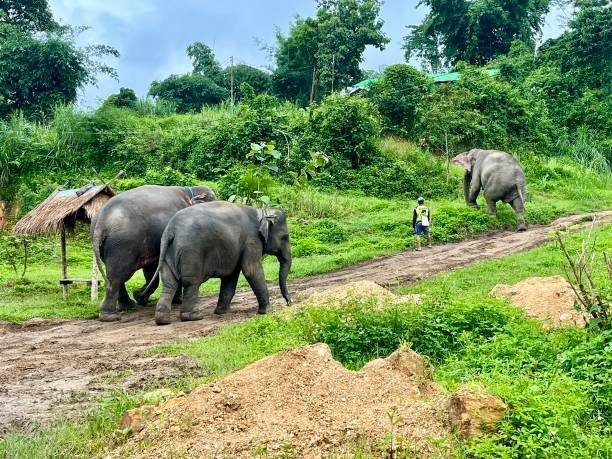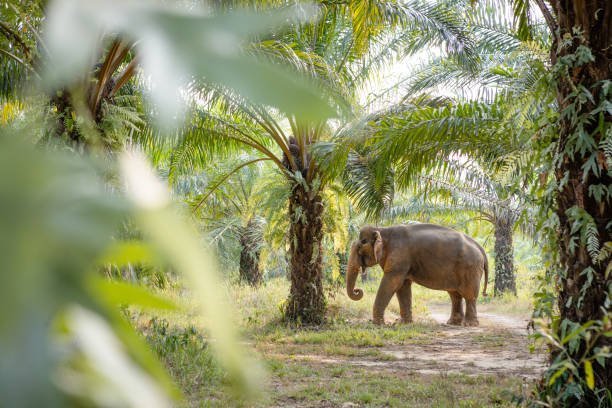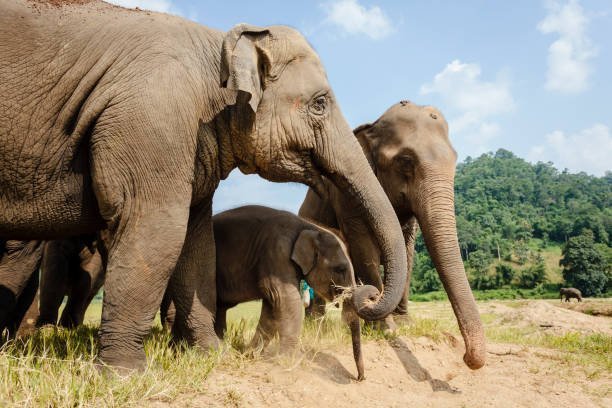What role do local communities play in elephant rescue?

Introduction:
In this article, we delve into a crucial aspect of elephant rescue and conservation— the pivotal role played by local communities. Elephants, the magnificent giants of the animal kingdom, often find themselves in perilous situations, be it due to conflicts with humans, habitat encroachment, or injury. During these challenging times, the collaboration between local communities and wildlife organizations is not just beneficial; it’s often essential for successful elephant rescue efforts.
In this exploration, we’ll uncover the significant contributions of local communities in mitigating human-elephant conflicts, reporting elephant sightings, assisting with rescues, and advocating for coexistence. Their intimate knowledge of the land and their close proximity to elephant habitats make them invaluable partners in these endeavors. By understanding the symbiotic relationship between humans and elephants and the critical role of local communities, we can work together toward securing a safer and more harmonious future for both.
Coexistence initiatives:
Local communities play a pivotal role in coexistence initiatives aimed at preserving elephant habitats. By promoting sustainable land-use practices and advocating for the protection of critical elephant territories, they contribute to creating safe havens for these majestic animals. This often involves working with conservation organizations to identify and safeguard important migratory routes and natural habitats.
Local communities are instrumental in reducing human encroachment into elephant habitats. They may implement buffer zones or corridors to minimize human activities in areas frequented by elephants, reducing the likelihood of conflicts and disturbances. By actively participating in initiatives to preserve natural landscapes, they ensure that elephants have access to the resources they need to thrive.
Community-based conservation education programs:
Education is a powerful tool in elephant conservation, and local communities are key facilitators in spreading awareness about the importance of these magnificent animals. Community-based conservation education programs empower residents to understand the ecological significance of elephants and the role they play in maintaining healthy ecosystems.
These programs may include workshops, school outreach, and community meetings where information about elephant behavior, needs, and conservation efforts is shared. By fostering a sense of stewardship and pride in their local wildlife, community members are more likely to actively support and participate in rescue missions and conservation initiatives.
Assisting in mitigating human-elephant conflicts:
Human-elephant conflicts, often arising from elephants encroaching on agricultural lands or villages, can have dire consequences for both elephants and local communities. In such situations, local residents are at the forefront of efforts to mitigate conflicts. They may employ various non-lethal methods like using deterrents such as chili fences, installing motion-activated lights, or employing trained elephants to guide wild ones away from populated areas.
Local knowledge is invaluable in predicting elephant movements and understanding their behavior, enabling communities to take proactive measures to prevent conflicts. Moreover, community members often serve as early warning systems, promptly alerting authorities or wildlife organizations when they spot distressed or injured elephants in need of rescue.
In essence, the active participation of local communities in mitigating human-elephant conflicts is essential for fostering peaceful coexistence and ensuring the well-being of both humans and elephants.
Economic benefits and livelihood support:
Local communities often benefit economically from elephants and wildlife through ecotourism and other wildlife-related enterprises. By protecting elephants and their habitats, these communities can secure long-term economic gains. Eco-tourism ventures like elephant safaris, guided wildlife tours, and nature reserves draw tourists and generate income for local residents. This creates a financial incentive for communities to actively support elephant rescue and conservation efforts.
Moreover, by collaborating with wildlife organizations and conservationists, communities can explore sustainable livelihood options that promote coexistence with elephants. These may include beekeeping, organic farming practices, or crafts made from eco-friendly materials. By diversifying their income sources and reducing dependency on activities that might lead to conflicts with elephants, local communities contribute to both their own economic well-being and elephant conservation.
Early warning systems:
Local communities are often the first to observe distressed or injured elephants and can act as crucial early warning systems. They play a pivotal role in reporting elephant sightings to wildlife authorities or conservation organizations promptly. This swift response is vital for initiating rescue operations and providing medical attention to injured elephants.
Effective communication channels between communities and conservation agencies enable timely intervention. Mobile phones and community-based reporting networks are often utilized to relay information about elephant emergencies. Local knowledge about elephant behavior, migratory routes, and seasonal movements also aids in predicting potential conflicts and facilitating proactive responses to protect both elephants and community interests.
Participating in conflict mitigation strategies:
Human-elephant conflicts are a significant challenge in regions where both humans and elephants share landscapes. Local communities are intimately familiar with the patterns and triggers of these conflicts and can actively participate in devising and implementing mitigation strategies. They often collaborate with wildlife agencies to implement non-lethal measures such as chili fences, noise deterrents, or designated safe zones for elephants.
Engaging communities in conflict resolution fosters a sense of ownership over conservation efforts. It encourages residents to take pride in their role as stewards of their natural environment and wildlife. Additionally, participatory approaches to conflict mitigation are more likely to be sustainable and culturally sensitive, as they respect the needs and perspectives of local communities.
Their economic incentives, early warning systems, and active involvement in conflict mitigation are instrumental in promoting peaceful coexistence between humans and elephants while safeguarding the well-being of these magnificent creatures. Collaboration between communities and conservation organizations remains pivotal in securing a harmonious future for both.
Conclusion:
I hope this exploration of the indispensable role local communities play in elephant rescue and conservation has shed light on the profound impact they have on preserving these majestic creatures. From economic incentives and livelihood support to serving as early warning systems and actively participating in conflict mitigation strategies, local communities are essential partners in safeguarding elephants and their natural habitats.
The collaborative efforts between local residents and conservation organizations exemplify the potential for coexistence and mutual benefit between humans and elephants. It is through this shared commitment to conservation that we can ensure a brighter future for these remarkable animals while enhancing the well-being and prosperity of local communities.
As we move forward, it is crucial to continue fostering these partnerships, promoting education and awareness, and finding innovative ways to mitigate human-elephant conflicts. By doing so, we can work together to protect these iconic creatures and ensure they thrive in their natural environments for generations to come.









Post Comment